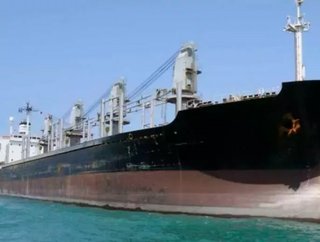Shipping and Sensors, Part One

By Jesse Bonfeld, VP Business Development, Sherborne Sensors
Sensors are an integral component of any measurement and automation application in the shipping and marine industry to ensure accuracy, reliability, efficiency and communications capability. This has fuelled research and development into the sensors industry and the continued innovation in sensors technology has ensured a thriving market and a growing demand for custom solutions.
According to analyst firm Frost & Sullivan, the sensors market in Europe is estimated to reach $19 billion by 2016, creating opportunities for technological advancements and ultimately new applications for sensors.
Shipping and marine companies continue to benefit from ongoing efforts to develop innovative, new sensor technologies needed to meet the ever expanding challenges of the industry. Ultra-reliability and long-life precision sensors such as inclinometers, accelerometers and load cells are commonplace in a number of marine and shipping applications.
Load cells, for example, are used to convert a force into an electrical signal and offers measurement of tension, compression and shear forces. The majority of today's designs use strain gauges as the sensing element and feature low deflection and high frequency response characteristics, which are especially beneficial for both materials testing and high‐speed load measurement applications, particularly where peak forces are being monitored. In the marine industry they are often used for hoist loads, platform retention, towing forces and mooring loads and systems.
SEE OTHER TOP STORIES IN THE SUPPLY CHAIN DIGITAL CONTENT NETWORK
Report shows Great Lakes shipping value
Melting polar ice opens new Arctic shipping routes
October’s issue of Supply Chain Digital has gone live!
Many common trends can be seen across the sensor marketplace and application portfolio, including the use of wireless communications technologies, improvements in the ability of sensors to operate in extreme conditions (temperature, shock, pressure, EMF, RF, radiation); bundling of capabilities to process multiple inputs and outputs on a single platform; and the development and use of novel materials to enhance sensor performance, longevity and accuracy.
Over the last few years, however, the shipping and marine industry has been under constant pressure to improve efficiency and reduce cost in the face of the worst global economic condition in decades. Consequently, companies have a tremendous incentive to re-examine equipment and technologies that they already have at their disposal, and investigate ways to utilize these readily available resources to meet new application requirements.
This approach, of re-examining existing patent portfolios and technologies as possible enablers or outright solutions to current and future technology development challenges is being used more and more and with significant success. Companies in the shipping and marine industry and public entities responsible for operating and maintaining marine fleets are examining andrecognizingthe value of existing, field-proven technologies as at least a partial solution to reduced budgets, and an opportunity to cost effectively facilitate meeting near and mid-term revenue and profit goals.
Come back tomorrow for Part Two of our feature on Shipping and Marine Sensor Technology!






